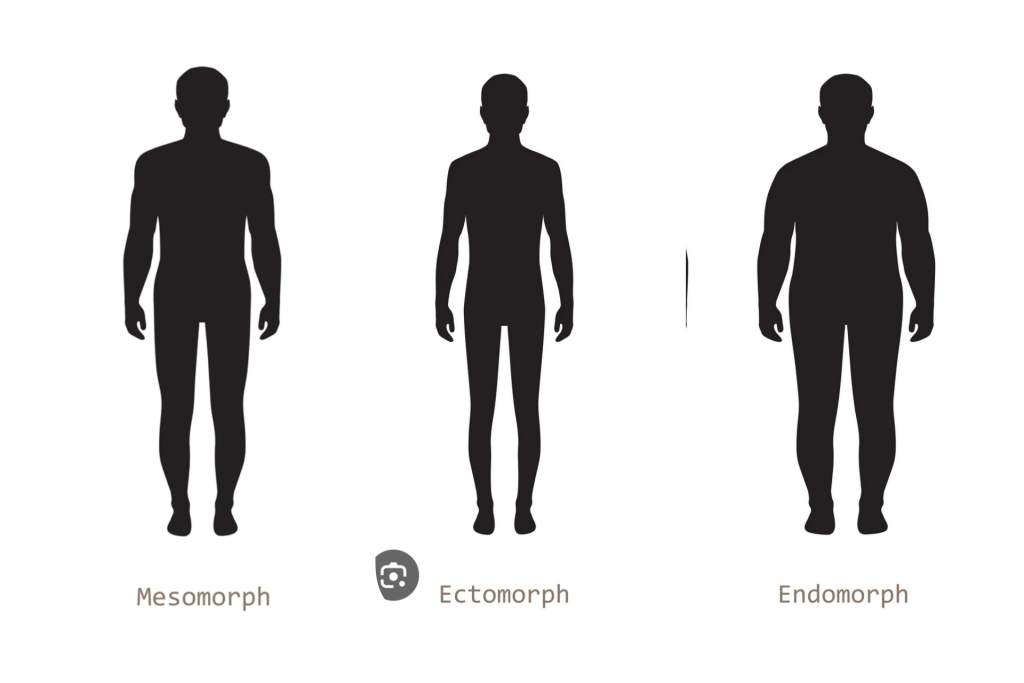What is the Somatotype? Somatotyping has been developed as a beginning, or first approach, to understanding the basis of human variation objectively. The somatotype is simply a formula expressing the relative strength of three primary components which, following the results of factor analysis and of empirical experiments, appear to be fundamental in determining an individual’s permanent body build pattern.
The three components are quantified on a seven-point scale and are expressed as a series of three numerals: the first numeral designating “endomorphy,” the second, “mesomorphy,” and the third, “ectomorphy.” Thus, the somatotype 7 4 1 reflects an extreme maximum for endomorphic endowment, an extreme minimum for ectomorphy, and a position close to the midpoint of the scale for mesomorphy.
Moreover, endomorphy and mesomorphy describe the body’s compactness, but they are two quite different kinds of compactness. Hence, Endomorphy means the relative predominance of the digestive system in the bodily economy. This means a significant development of the digestive viscera and the abdominal segment housing them.
In embryonic life, the endoderm (the inner embryonic layer) grows principally into the functional element of the digestive or vegetative system and its appendages. Endomorphs, therefore, are digestive athletes of sorts. They are super-food processors, easily producing surplus fat and storing it throughout the body. Thus, they tend to take on a roundness of form, becoming spherically compact. The abdominal segment dominates.
Nevertheless, the embryonic mesoderm gives rise to the somatic frame, muscle, and connective tissue—and in fact to the supportive framework of all the component elements of the body. Mesomorphs are compact because they are heavily packed with dense substances, chiefly bone and muscle. The thoracic segment (engine room) tends to prevail markedly over the abdominal segment (boiler room), and of course, the arms and legs are more strongly developed. As a conventional concept, mesomorphy refers to muscular power, toughness, and athletic potential.
As mature endomorphs tend toward a spherical form, mesomorphs suggest squareness, rectangularity, or a cuboid structure when they mature. In extreme mesomorphy, the thoracic segment (chest region) stretches dramatically over the abdominal region. Ectomorphy refers to stretched-outness, which is the opposite of both compactness types.
In endomorphy and mesomorphy, mass predominates conspicuously on the surface. In the third component, ectomorphy, the biological investment is toward surface extension at the expense of both kinds of mass, of course.
The embryonic ectoderm produces the skin and its appendages, which include the nervous system and the active elements in the sense organs. The ectomorph is a skinny being in the literal sense of the word. They have more skin than viscera or bone and muscle. They have devoted more skin because of the relatively significant amount of surface in proportion to mass. An ectomorph has biologically stretched out his neck—and his limbs and trunk as well.
An ectomorphic creature (of any kind) seems to be one who has surrendered the relative security and biological advantages of compact massiveness in favor of the pursuit, presumably, of other kinds of advantage that may perhaps accrue from an adventurous extension into what (for the growing organism) is unidentified space.
Further, under normal conditions, the ectomorphic way of life would seem to be dangerous. Maybe it is. That may be the reason why ectomorphs, when they break mentally, tend to break harshly, with poor prognosis.
Read More – Ways to Maintain Healthy Sleep During Winters







